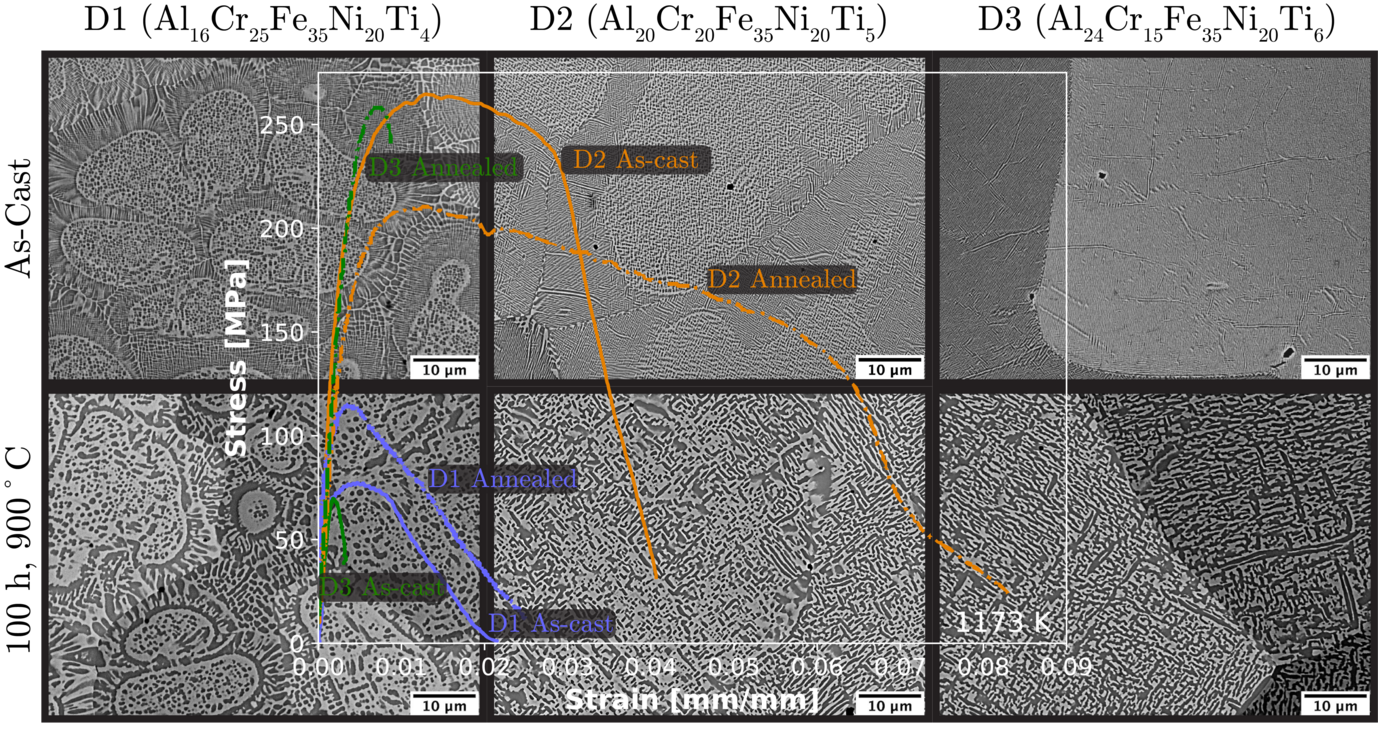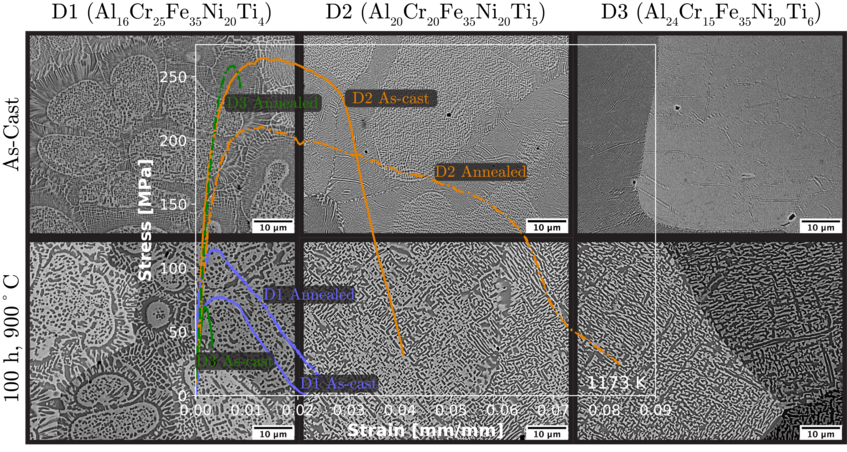
Towards balanced creep resistance and ductility in precipitation strengthened AlCrFeNiTi CCAs
Previous studies of the AlCrFeNiTi system have identified two intriguing phase formation regimes with regards to Al content. Alloys with ~15 at.% and less Al show mainly bcc primary dendrites containing ordered B2 and/or L21 precipitates. These alloys have microstructures and properties similar to so-called ``Fe-base superalloys", which exhibit high temperature strength and creep resistance up to temperatures of 700 °C and stresses of 100 MPa [1-4]. Alloys with ~20-25 at.% Al show maze-like microstructures composed of a nano-scale lamellar arrangement of bcc and ordered B2/L21 domains. Preliminary mechanical tests have shown that these alloys retain significant strength up to 900 °C but do not have enough ductility, even at elevated temperature, to be of industrial relevance. Here we study three alloy compositions that include one alloy with primarily bcc microstructure, one alloy with primarily lamellar bcc + B2/L21 microstructure, and a bimodal alloy consisting of nearly equal portions of the bcc dendrite morphology and the lamellar morphology. In the micrographs below, the light contrast domains are disordered bcc, and the dark contrast domains are ordered B2/L21. We use XRD to determine the macroscopic phase formation as well as globally averaged lattice parameters. Chemistry and microstructure morphology on the length scale of individual grains are characterised using SEM coupled with EDS. For local chemistry and atomically-resolved phase boundary structure we use aberration correction (S)TEM and EDS. Finally, the macroscopic mechanical response is recorded by bulk-scale high temperature tensile testing, and the resulting mechanical properties are discussed in the context of TEM dislocation analysis. With this study we will show how fine-tuning of alloy composition within a five-principle-element composition space can be carried out to achieve balanced property combinations for targeted alloy development.

